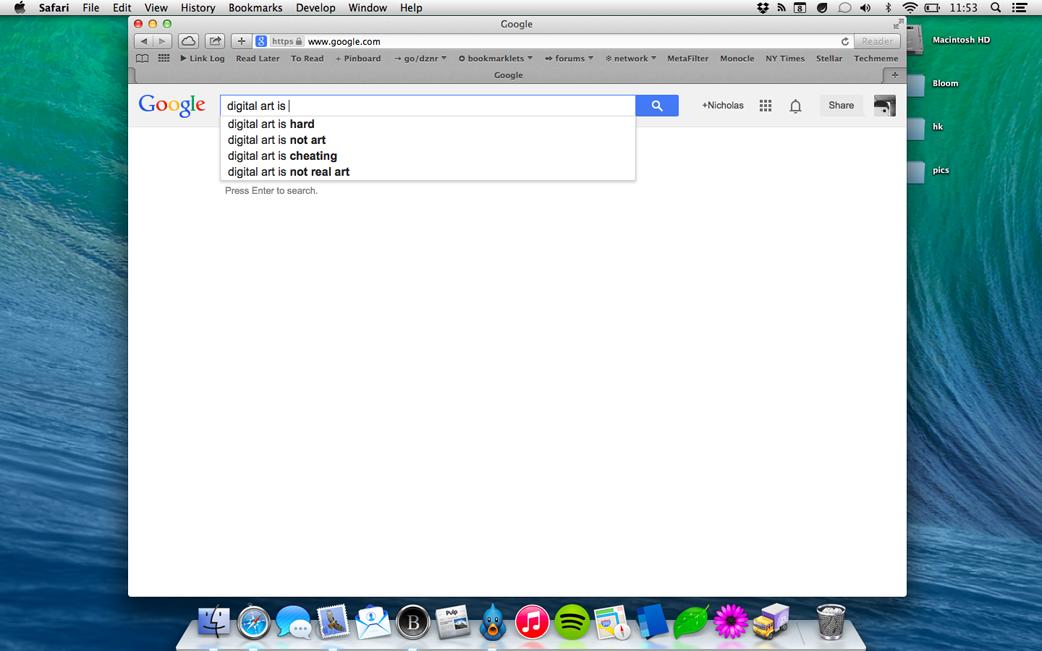Grading “Spitballing Apple’s October Event” ⇥ pxlnv.com
I got a lot of things right — dammit, I nailed that iPad pricing — but here’s what I got wrong:
I wouldn’t be surprised to see nods to new Thunderbolt accessories and a demo of an updated Final Cut Pro during [the Mac Pro] segment.
They included only testimonials of the Mac Pro and descriptions of Thunderbolt and Final Cut, not full demos.
I don’t think [Mavericks] will be free — Apple doesn’t use that kind of accounting for Mac sales — but I think it might be in the $20-30 range.
I was (quite happily) wrong about this. Free it is. You can download it now.
[iPads] available in “space grey”, silver, and (probably) gold.
No to the gold, yes to the other two colours.
I initially thought that Apple might simply put a standard A7 in [the iPad Air]. However, while the graphics performance is double that of the A6, the A7 therefore equals the graphics performance of the A6X of the fourth-generation iPad. I think Apple’s still going to push that performance farther, espcially for the gaming advantage. I also think it will receive the M7 for the same reason.
This seems incorrect. Apple claims that the iPad Air contains the A7 chip, but they also claim it has double the graphics performance of the A6X in the fourth-generation iPad. My bet is that it’s a derivative of the A7 with higher graphics performance, but under the A7 name. However, it’s a wrong call until it is proved otherwise.
iPad Mini: I anticipate that there will be a model which receives a spec bump, with a die- shrunk A6 processor and availability in space grey, silver, and gold. I’m not as sure that this will receive the M7.
The (non-retina) iPad Mini received no upgrades today.
iPad 2: I think this is the year it might be entirely dropped from the lineup.
It lives on at the $399 price point. I don’t understand why someone would buy this instead of a retina iPad Mini for the same price.
iPod Classic: The day after the event — October 23 — will mark twelve years since its introduction. I think it might be dropped this year.
The iPod Classic remains. I believe Charlie Chaplin had a similar model.
Thunderbolt Display: In-line with the Mac Pro news, a Thunderbolt Display with the same thin, laminated display as the 2012 iMacs might be in store. And, hey, it might have a 4K display (though I doubt this — those panels are still monstrously expensive).
No new displays today.
Not a bad grade, all told. Not great, but I’m very pleased that I got the iPad pricing call correct, and I’m quite pleased to be wrong about the Mavericks pricing, too (along with the now-free iWork and iLife suites).
